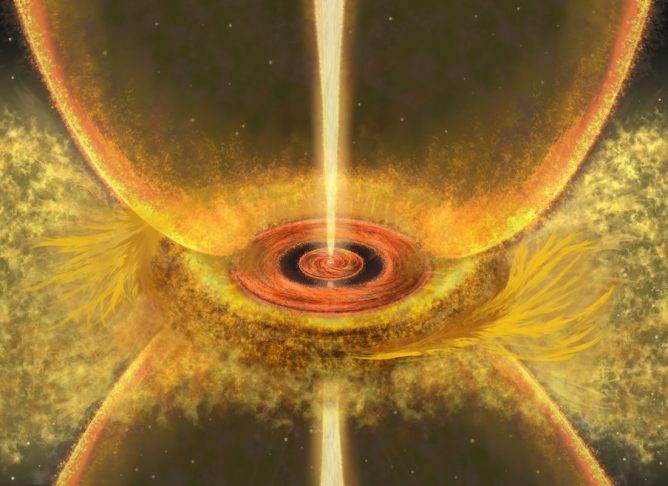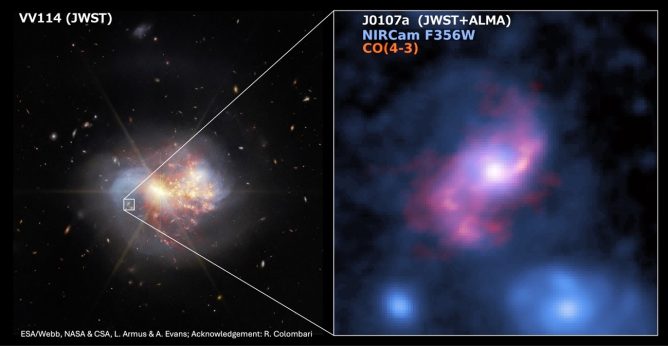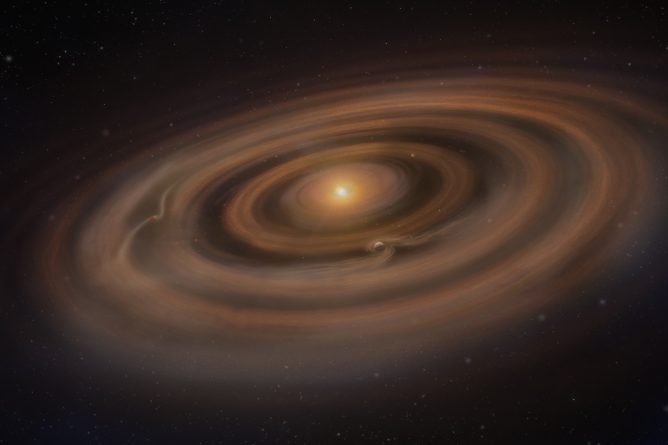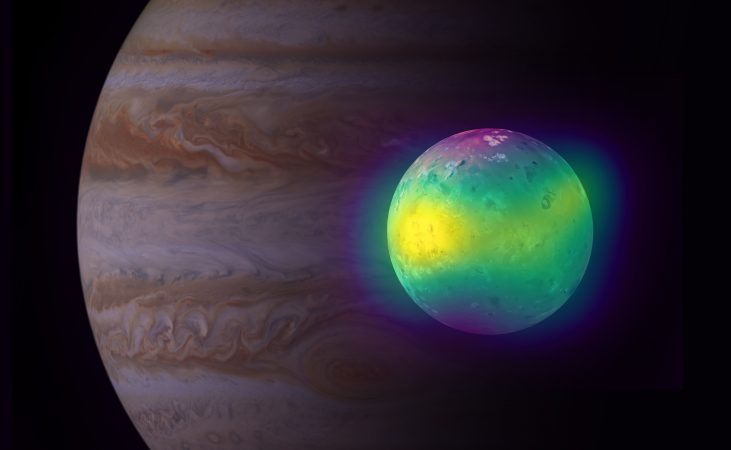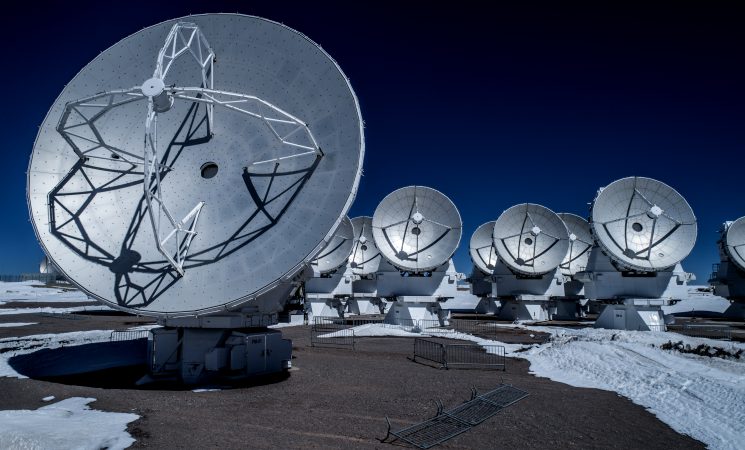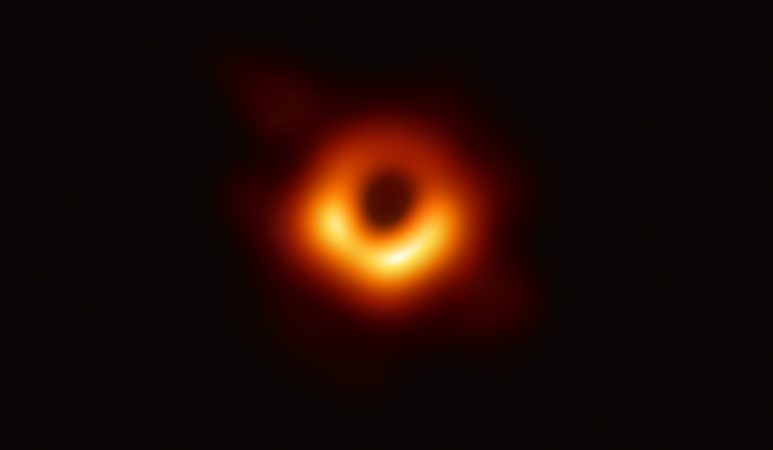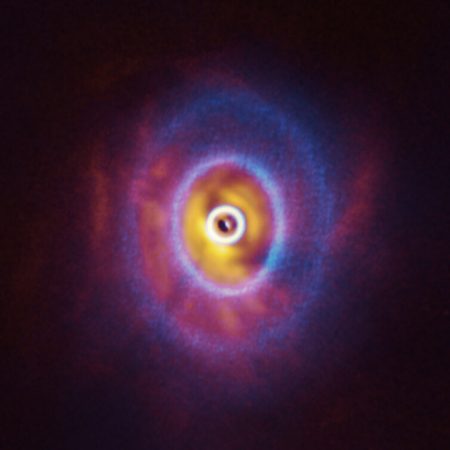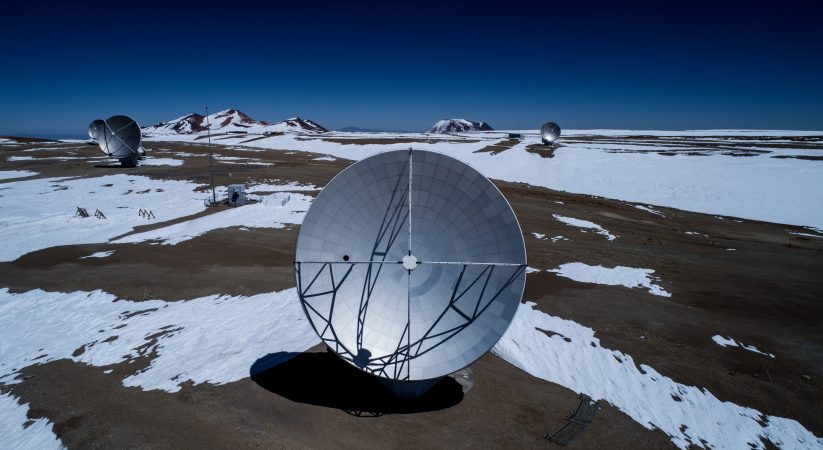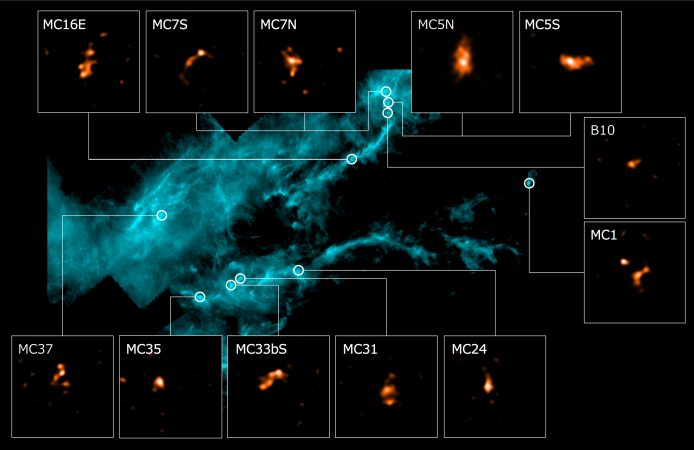Overview
Observations of colliding galaxies using ALMA and other radio telescopes have revealed that collisions between galaxies are likely to result in a galaxy with a gaseous disk structure. This is an important result, which gives us a clue about how disk galaxies like our own Milky Way form.
An international research group led by Junko Ueda, a JSPS (Japan Society for the Promotion of Science) postdoctoral fellow, investigated the distribution of molecular gas in 37 galaxies which are at the final stage of collisions between galaxies. They used data collected by radio telescopes from around the world, including ALMA. The group found that among the 30 colliding galaxies whose molecular gas was detected, 24 galaxies had molecular gas disks that were rotating. Furthermore, it turned out that a half of these rotating molecular disks were larger than the central concentration of stars. If the gas disks eventually form stars, these remnants of galaxy collisions are likely to evolve into a new galaxy that have both stellar and gas disks.
Research Background
The Milky Way Galaxy is a huge celestial object containing 100 billion Sun-like stars and a large amount of gas and dust, which are distributed in the form of a disk with a spiral structure. Such galaxies are called “disk galaxies” and comprise more than 70% of galaxies in the universe. On the other hand are “elliptical galaxies”, which are made of hundreds of billions of stars gathered in the form of an ellipsoid.
Figure 1. Disk galaxy and elliptical galaxy. Andromeda Galaxy (left) is a typical example of a disk galaxy, which clearly shows a disk surrounding a central concentration of stars called the “bulge”. NGC 1316 (right) captured by the VLT of European Southern Observatory (ESO) is an example of an elliptical galaxy with no disk structure.
Credit: Hiromitsu Kohsaka/HSC Project/NAOJ/ESO
How did these different shapes of galaxies form? Collisions between galaxies are the key to understand the evolution of galaxies. Galaxies around us today are thought to have gone through repeated collisions with their neighbors, growing and changing their form throughout cosmic time. It has not been known, however, what kind of galaxies emerge as the result of a collision and subsequent merging.
According to computer simulations which started in the 1970’s, it has been predicted that a merger between two comparable galaxies would result in an elliptical galaxy. In fact, many elliptical galaxies which have long extended tails or rings made of stars have been discovered by optical telescopes. These are thought to be remnants from galactic mergers. Therefore, it has been widely accepted that elliptical galaxies form as a consequence of galactic mergers. In contrast, more recent simulations have suggested that a merger between comparable galaxies could also result in a disk galaxy. There has never been any observational evidence, however, of disk galaxies forming as the result of a galaxy collision.
A Catalog of Molecular Gas in Merging Galaxies
In order to investigate the shapes of galaxies after galactic collision, an international research group led by Junko Ueda (JSPS postdoctoral fellow/NAOJ) studied the distribution of molecular gas in galaxies at the final stage of a merger. The group selected 37 galaxies from a catalog of merging galaxies. A suite of radio telescopes ALMA, CARMA [1], and SMA [2] were used to observe radio emission from carbon monoxide (CO), an indicator of molecular gas, in 27 of these galaxies. Molecular gas for the other 10 galaxies had been previously observed by ALMA, PdBI [3], and SMA, so the group was able to investigate the distribution of gas in all 37 galaxies [4]. As a study of molecular gas in galaxies at the final stage of a merger process, the compiled catalog is the largest to date.
Molecular gas was detected and mapped out successfully in 30 out of 37 galaxies (Figure 2). It was found that in 24 out of these 30 galaxies (80%), molecular gas was distributed in the form of a disk. This study showed that at least in the nearby (within 40 to 600 million light years) universe, galaxy collisions can create gas disks. The team also analyzed the Doppler effect [5] of the radio waves and found that these gas disks rotate around their galactic center. Further, 11 out of the 24 gas disks were found to be larger than the central concentration of stars. One of the gas disks were comparable to the size of the gas disk of the Milky Way. This is the first direct evidence that galaxies at the final stage of a merger have gas disks at a high rate.
Figure 2. Distributions of gas in merging galaxies observed by radio telescopes. Contours indicate the radio intensity emitted from CO gas. The color shows the motion of gas. The red color indicates gas is moving away from us while the blue color is coming closer to us. The gradation from red to blue means that gas is rotating in a disk-like manner around the center of the galaxy.
Credit: ALMA (ESO/NAOJ/NRAO)/SMA/CARMA/IRAM/J. Ueda et al./Wilson et al./Hunt et al./Jütte et al.
Movie. CG movie of a collision between two galaxies, leading to the formation of a disk galaxy. Upon merging, the shape of the galaxies is disturbed by gravitational interaction and grow into a galaxy with a disk structure. The movie shows the collision of two disk galaxies, but the actual shape of galaxies prior to the collision is not known.
Credit: NAOJ
Dr. Ueda, who led the research team, says that it was “unexpected” that gas disks can be found in so many galaxies. She explains that “if stars form actively in these large gas disks, they will become disk-dominated galaxies such as our own Milky Way. This study is a large step towards understanding the mystery of the birth of disk galaxies. We would like to start focusing on the evolution of these gas disks to stellar disks.”
Dr. Ueda further explains the results. “Our result is pivotal in understanding the evolution of galaxies in the universe. Recent observations have found that 50-75% of galaxies in the distant universe (7-11 billion light years away) have gas disk structures. Opinion is divided on how such galaxies form, however. Some claim that galaxy-galaxy collisions are responsible for such disks, while others claim that the disks form by cold gas gradually falling to the galaxy. If the result from our study is true also in the distant universe, these far-away disk galaxies may have formed by galaxy collisions which occurred much further back in time. That’s what makes this study important in understanding galaxy formation not only in the local but also in the distant universe.”
Notes
[1] Combined Array for Research in Millimeter-wave Astronomy: A millimeter array consisting of 23 parabola antennas in California, which is jointly operated by five universities including the California Institute of Technology.
[2] Submillimeter Array: A submillimeter array consisting of eight parabola antennas in Maunakea, Hawaii, which is jointly operated by the Harvard-Smithsonian Center for Astrophysics and Academia Sinica Institute of Astronomy and Astrophysics (ASIAA).
[3] Plateau de Bure Interferometer: A millimeter array consisting of six 15-m antennas in Plateau de Bure, which is operated by Institut de Radioastronomie Millimétrique (IRAM) jointly established by France, Germany, and Spain.
[4]The data used by the research team are: 21 objects by ALMA (20 observed by the team this time and 1 from the data archive); 2 objects by CARMA (both observed by the team), 12 objects by SMA (5 observed by the team and 7 from the data archive); and 2 objects by PdBI (both from the data archive). In addition, the researchers used data obtained by NAOJ Nobeyama 45-m radio telescope, US’s National Radio Astronomy Observatory’s 12-m telescope, US’s Five College Radio Astronomy Observatory’s 14-m telescope, IRAM 30-m telescope, and Swedish-ESO Submillimeter Telescope as a supplement.
[5] The Doppler Effect is a change in the frequency of a wave emanating from a moving object. You may have heard the difference in frequency between when a car sounding a siren is moving toward to and away from you. Molecules in the Universe emit radio waves with their characteristic frequency, and if the molecules are moving, the frequency shifts slightly due to the effect. By measuring the shift of the frequency very precisely, astronomers estimate the speed and direction of moving gas.
Paper and Research Team
These observation results were published in The Astrophysical Journal Supplement (August 2014) as Ueda et al. “COLD MOLECULAR GAS IN MERGER REMNANTS. I. FORMATION OF MOLECULAR GAS DISKS .”
This research was conducted by the following members:
- Junko Ueda (JSPS postdoctoral fellow/National Astronomical Observatory of Japan [NAOJ])
- Daisuke Iono (NAOJ/The Graduate University for Advanced Studies [SOKENDAI])
- Min S. Yun (The University of Massachusetts)
- Alison F. Crocker (The University of Toledo)
- Desika Narayanan (Haverford College)
- Shinya Komugi (Kogakuin University/ NAOJ)
- Daniel Espada (NAOJ/SOKENDAI/Joint ALMA Observatory)
- Bunyo Hatsukade (NAOJ)
- Hiroyuki Kaneko (University of Tsukuba)
- Yoichi Tamura (The University of Tokyo)
- David J. Wilner (Harvard-Smithsonian Center for Astrophysics)
- Ryohei Kawabe (NAOJ/ SOKENDAI/The University of Tokyo)
- Hsi-An Pan (Hokkaido University/SOKENDAI/NAOJ)
This research is supported by JSPS Postdoctoral Fellowship Grant, Grants-in-Aid for Scientific Research (25800116), and research funding by the U.S. National Science Foundation (AST-144560).
The data used in this research is available in this web page.


